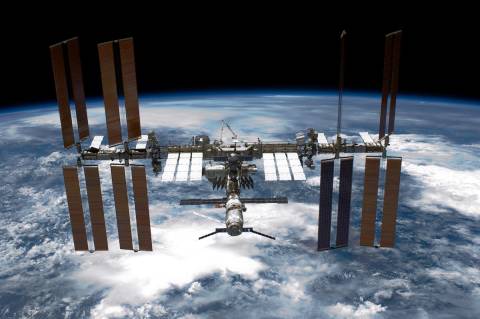A tiny surgery robot will be sent to the International Space Station

The “miniaturized in vivo robotic assistant”, or Mira, will be configured to fit inside an experiment locker and tested to ensure that it survives the launch.
Mira can be inserted through a small incision so abdominal surgery can be performed with minimal invasion, and the robot could work remotely. In the future, the robot may be able to deal with medical emergencies while the operator is thousands of miles away.
A previous experiment saw the robot perform surgery-like tasks in an operating room 900 miles away from its user.
While aboard the space station the robot will work autonomously, cutting up stretched rubber bands and pushing metal rings along a wire to simulate the movements it will make in surgery.
“These simulations are very important because of all the data we will collect during the tests,” University of Nebraska Omaha engineering graduate student Rachael Wagner said.
The device is being programmed to work autonomously to conserve space station communications bandwidth and to minimize the amount of time astronauts must spend developing the experiment and it is predicted that the robot will operate for 50 to 100 years - but the real aim of the robot is to ensure that it works in a zero-gravity environment.
“As people go further and deeper into space, they might need to do surgery someday,” Nebraska engineering professor Shane Farritor said. “We’re working toward that goal.”
For a crew of seven people, researchers estimate that there will be an average of one surgical emergency every 2.4 years during a Mars mission – making it imperative that the enormous distances between Earth and outer-space missions that might jeopardise astronauts’ health be overcome.
Surgery in microgravity is possible and has already been carried out. Astronauts have managed to repair rat tails and perform laparoscopy – a minimally invasive surgical procedure used to examine and repair the organs inside the abdomen – on animals, while in microgravity. However, surgery on a human in microgravity has not been done yet.
Technologies such as autonomous and effective keyhole surgery become immensely useful in potentially tense situations as intestines can float around, obscuring the view of the surgical field, during open surgery.
To deal with this, space travellers should opt for minimally invasive surgical techniques, such as keyhole surgery, ideally occurring within patients’ internal cavities through small incisions using a camera and instruments.
Read MoreRussian space chief: no date yet for space station pullout
China spacecraft returns amid booster rocket concerns
China adds science lab to its orbiting space station
Brazilian twins conjoined at the head separated by UK surgeon after 33-hour operation
Russia will stay on the International Space Station, Nasa says
Russia to leave International Space Station
